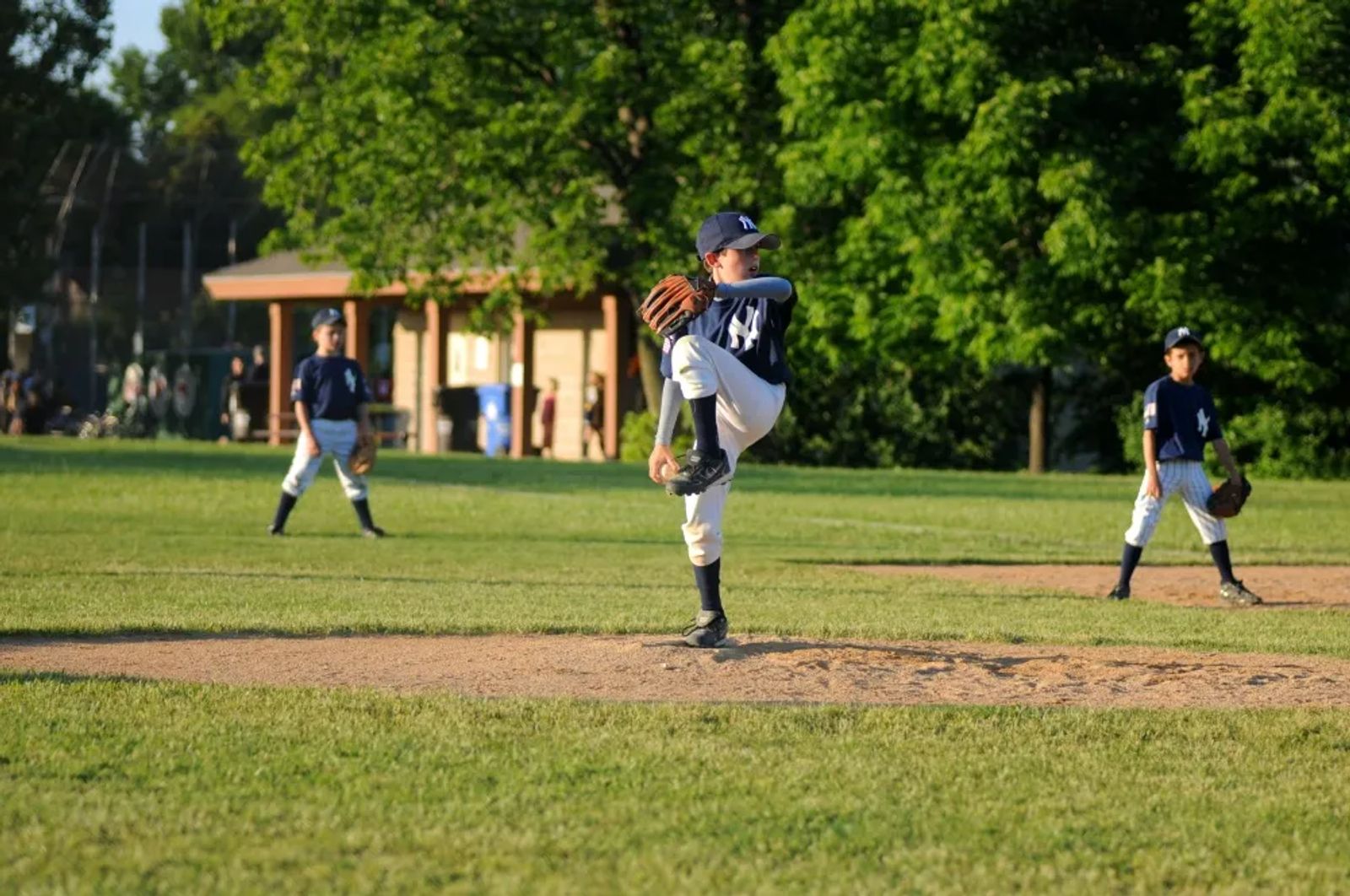
photo by ben hershey via Unsplash
Reimagining Youth Sports
August 2021
by rebecca stewart
The landscape of youth sports is constantly changing. After a year that was essentially one giant pause button, it seemed like the stage was set to make an important change. Despite the very real and serious challenges of 2020, families marveled at the joy that came with finding themselves underscheduled. The timing seemed ripe for a conversation about changing the game and evaluating how youth athletics has evolved towards a year-round, ride or die elite/specialized focus early on.
Alas, here we are on the other side of things, and we're all so thrilled to be "back to normal" that, however wonderful that bonus family time was, we dove right back in, and things have seemingly stayed the same. As early as April 19, 2020, Changing the Game Project began writing about Reimagining Youth Sports in a Post-COVID-19 World. John O’Sullivan wrote that he believed when we returned to play, there would be multiple factors weighing heavily on the minds of parents:
- Family Time- After weeks of quality family time, are we ready (and willing) to go back to the crazed sprint of going from one field or gym seven nights a week?
- Rest & Recovery- My child feels healthy and well-rested for the first time in years with this time off. Should we cut back on their training load?
- Finances- This time hit us hard financially, could there be a less expensive local sports option available?
- Freedom of Unstructured Play- In June 2016, Mark Rerick wrote in The Importance of Multi-Sport Participation for the National Federation of State High School Associations (NFHS) that “kids who are allowed time to free play – outside the structure of organized sports – tend to be more creative, have better basic motor skills, learn more social/emotional skills, and find ways to just have fun while playing.”
- Logistically Speaking- We live in an area with tons of people, do we really need to travel by bus or plane to get to games when we can get plenty of games nearby?
All valid points to ponder, but the truth is, it would take a massive reawakening on multiple levels to genuinely effect change in the way youth sports operate. So, today we’re going to look at ways we could challenge the current mindset.
Reality: When it comes to youth athletics, there tends to be very little living in the now; rather, the adults (and eventually the kids) are keeping their eye on what they want from the later. Obtaining that Varsity letter sooner rather than later, earning the scholarship, being the starting [fill in the blank] …
Reality Check: According to the NCAA, only about 2% of high school athletes are awarded athletics scholarships. Although, Scholarship Stats.com states that, “Overall a little over 7% of high school athletes (about 1 in 13) go on to play a varsity sport in college and less than 2% of high school athletes (1 in 57) go on to play at NCAA Division I schools.
As for the rest, challenge yourself and your athlete to be present now and seek clarity when looking at the long-term. It’s not going to matter 5 years down the road when they earned their Varsity letter. Absolutely, strive for greatness, have goals, and operate with dedication and determination, but place greater value on the things they can control and the human being they are striving to become. Sometimes it’s about flipping your perspective: instead of focusing on what they’re not getting, see what they are and where they can work to get more if that’s the goal. Communication between player and coach is key.
Reality: This focus on the later in terms of athletic aspirations can lead to the push to specialize at younger ages.
Reality Check: It’s been widely debated and generally recognized that this push to specialize can be detrimental for the young athlete. Leading to issues like burnout and overuse injuries. Rerick wrote that specializing can also lead to stunted social and emotional growth for a variety of reasons. Not least of which is that increased time in one activity naturally leads to decreased time in other activities, narrowing an adolescent’s social circle and experiences outside of the specialized sport.
In terms of college recruitment, MSUB’s Assistant Women’s Basketball Coach, Alisha Breen, shared that she would choose a multi-sport athlete over one who is singularly focused. Noting that multi-sport athletes are more well-rounded, have learned to play with different types of people, and playing other sports builds other skill areas. Similarly, other MSUB coaches acknowledged that they look for community-minded athletes - they participated in organizations like FFA, BPA, FCCLA, etc., where they learned additional skills and served their community.
Reality: Locally based programs (Little Leagues, parks and rec, YMCAs, etc.) are looked at as "less-than" compared to Club or Travel Teams.
Reality Check: Sometimes they are. As we emerge from the COVID-19 pandemic, the question O’Sullivan poses to these programs is, “Are you planning to roll out the same old programming that may no longer work and was inadequate at best, or will you take this opportunity to reimagine your program?” Gut punch that that is, to make genuine changes in our youth sports programs – local leagues and travel clubs – we need what O’Sullivan has deemed the MUST HAVES:
- Mandatory coach education and development that goes beyond the basics of your sport and includes connecting with kids on all levels and creating athlete-centric programming.
- Mandatory parent engagement and development that gives them ownership in creating a high-quality sideline experience. Teach them how to help their children and positively support them on and off the field.
- Creative programming that includes more local play and small-sided games, thus providing more touches, more decisions, spreading some of the better players across multiple teams, and the opportunity to play after a 5-minute drive instead of a 5-hour drive.
- Delay our desire for talent selection and separation (referring to the 12 and younger crowd). O'Sullivan encourages developing age groups instead of a single team, providing opportunities to play up, play down, train with those with similar abilities and mixed abilities. Spend more time on the field and less time in the car. PREVENT BURNOUT, INJURY, AND DROPOUT.
- Provide balance for our families. As a coach, I, of course, wanted my kids at practices and games, but I also wanted them to have much-needed family time.
- Transformational values and character development. O’Sullivan emphasizes that every youth sports organization must put character and personal development at the forefront of their mission.
Belief: Talent is the be-all, end-all.
Reality Check: Talent will only take you so far. Going back to college recruiters, they’re also looking for a solid student. Our MSUB coaches noted that a good student also has the discipline and dedication that goes hand-in-hand with athletic success. Both Coach Breen and the other coaches surveyed said they look for a team player who is a hard worker, “We’ll recruit a #2 or #3 over the top kid every time if they have that tough and hardworking attitude.”
Perhaps the greatest reality check that should be at the root of this conversation is that kids want to play because it’s fun, because they love the game, and a hundred other reasons, many of which trump winning every time. As parents, we can introduce our kids to the game, but as time marches on, our level of investment can’t be higher than theirs. So let's provide opportunity while creating an environment that doesn’t have them burnt out by the time they are 13. Let’s reimagine the game.
Originally printed in the August 2021 issue of Simply Local Magazine
Never miss an issue, check out SLM's digital editions here!





